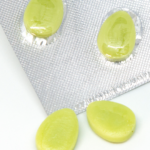Millions of men use the brand name medication Viagra® every year, making it the single-most popular medication used to treat erectile dysfunction in the country.
And we can see why — it works. Used at the proper dose, Viagra is considered very effective at helping men achieve and maintain an erection and is approved by the Food and Drug Administration for the treatment of ED.
It’s also not a bad thing if you can’t exactly explain how it works. Either way, the famous Pfizer little blue pill can help men aged 18 or older affected by ED to get hard and stay hard when aroused, making sexual activity easier and enhancing sexual performance in general.
But we’re pretty into knowing what we’re putting in our bodies, and we bet you are, too.
So if you’re wondering to yourself “how does Viagra work in the body?” let’s dig a little deeper than “pill makes peen go up,” because although Viagra might seem like an on/off switch for your penis, the way the medication works is fairly complex.
How Viagra Works
Let’s just begin with this very obvious starting question: what does Viagra do? Is it something to do with ball bearings? Quarks? String theory?
Sadly, no. It’s a boring old biological reaction.
Viagra works by inhibiting the enzyme that’s responsible for controlling blood flow in and out of your penis when you’re sexually aroused. Viagra inhibits this phosphodiesterase-5 (PDE5) enzyme — which explains Viagra’s (creatively named) classification as a PDE5 inhibitor.
Now, before we get into this in more detail, it’s important to briefly explain how erectile dysfunction happens and the role PDE5 plays in the process.
Erectile dysfunction, or ED, happens when you get aroused but the PDE5 enzyme stops a sufficient amount of the blood you need to get you hard from flowing into the corpora cavernosa.
Phosphodiesterase type 5 plays a normal role in making the penis flaccid after sex, but in men with erectile dysfunction, PDE5 can make getting erect and staying erect during sex difficult (or impossible). PDE5 is, essentially, number one among the causes of ED.
Viagra then, is the treatment for that cause.
- By inhibiting PDE5, Viagra makes it easier for blood to flow into the blood vessels in your penis, allowing you to get — and stay — hard during sex.
- It also reduces the risk of blood flowing back out of your penis during sex, meaning you’re less likely than normal to lose your erection.
- This makes Viagra (as well as similar medications, such as Cialis® and Levitra®) a highly effective treatment for erectile dysfunction in most men.
- Other erectile dysfunction medications, such as Cialis and Levitra, also work by inhibiting the PDE5 enzyme.
- These medications differ from Viagra in how long their effects last — Tadalafil (generic Cialis), for example, can provide relief from erectile dysfunction for as long as 36 hours.
By the way, ED can range in severity — you could find it difficult to get fully erect when you’re sexually aroused but still get a moderate erection. If your ED is severe, your penis might stay entirely flaccid even when you’re aroused, making penetrative sex impossible.
Be sure to seek medical advice from a healthcare professional before you take Viagra and discuss any pre-existing health conditions and any over-the-counter or prescription drugs (such as nitrates) you currently are taking, as these may cause an interaction.
How Long Does it Take for Viagra to Work?
If this is your first time taking Viagra, make sure you plan your sexual activities accordingly — it may not work exactly the way you’ve read online.
Depending on where you got your initial information, the internet suggests that a dose of Viagra could work minutes to hours after taking the pill, and to an extent that’s true. But sticking strictly to the FDA guidelines, Viagra typically kicks in about 30 minutes after you take it, and can work for up to four hours thereafter.
That time frame may be affected by food, your weight, whether you find interesting porn or if your partner does that thing where they run their fingers through your hair.
All we can do is point to the window of effect, and remind you that everyone will have a slightly different experience. Oh, and if you’d like to learn more you can read our blog on how long Viagra lasts.



